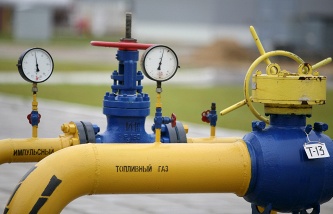
Then and now: 238 years of sports in the United States
July 4, 2014
Russia is reliable gas supplier to Europe – GDF Suez CEO – ITAR
July 4, 2014
Bay Area businesses naturally look toward Asia. Our demographics push us that way. So does trade, since Asia is the region’s leading trading partner. We tend to look West across the water more than East across the land.
But this leads to a skewed perception of the region’s economic relationships. Europe feels far away, but our economic ties with Europe are in key respects larger than with Asia and will stay that way for the foreseeable future.
This region is home to more than 170,000 immigrants from Europe. European-born residents are highly educated, with 26 percent having a masters degree or higher, and account for almost 10 percent of the region’s STEM workforce (18,000+). Some 35,000 direct flight seats per week link the region with Europe, supporting business and personal connections.
The bigger story, however, is about investment. Private equity and venture capital going to Europe was over $3.3 billion in 2012, exceeding investment in the rest of the world.
Europe accounts for nearly half of financial flows into the region from overseas — $4 billion in 2012 compared to $4.2 billion from the rest of the world. It is also the largest business investor in the region, accounting for one-third of all foreign companies in the area. While European companies have more than 1,000 affiliates here, Bay Area companies have even more in Europe: 3,200.
Much of this activity is focused on technology. Leading companies such as Orange (France Telecom), BT (British Telecom) and Siemens have technology offices.
Auto companies including Volkswagen and Mercedes Benz have research centers. Other companies such as Total (France), SAP (Germany), ARM (UK), and Philips (Netherlands) employ thousands in research and manufacturing spanning solar power, semiconductors, software and LED lighting. The region is the global biotech base for Bayer, which has both research and manufacturing operations.
The Bay Area is also a Mecca for European start-ups, with 300-400 in the area at any moment. They come to access venture capital, find talent and scale up — things that are difficult in Europe, where venture capital is scarce and national markets are smaller. Those that succeed become bi-national, creating jobs on both sides of the Atlantic.
European governments including Norway, Spain, Germany, Sweden, France and Italy are supporting this exchange by sponsoring accelerators that help early-stage companies connect with Bay Area partners and investors.
This is a highly sophisticated relationship, reflecting the advanced nature of the Bay Area and European economies and the technological capacity in both. And despite Europe’s recent challenges, it has continued to grow.
Asia will continue to dominate the Bay Area’s trade, and investment from China, though small, is growing. We should welcome that. But it will be a long time before it approaches the scale of investment from Europe.
All this means the Bay Area’s global ties are more balanced than they appear. It suggests that more investment is needed in one of our strongest global relationships.
The Trans-Atlantic Trade and Investment Partnership (TTIP), an expansive negotiation underway between the United States and the European Union, offers an opportunity. A hot topic in Europe, TTIP has received scant attention here. But an agreement reducing tariffs and harmonizing regulatory standards would support more than 75,000 jobs in California.
As a global economic center, the Bay Area should look for its growth to both the Atlantic and the Pacific.
Sean Randolph is President CEO, and Tracey Grose is Vice President of the Bay Area Council Economic Institute, which recently published “The Bay Area and Europe: Investing in Each Other on the Bay Area’s European connections.” They wrote this for this newspaper.

